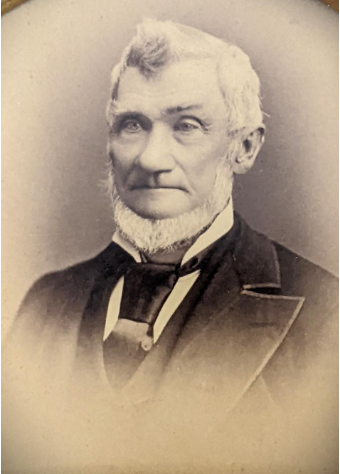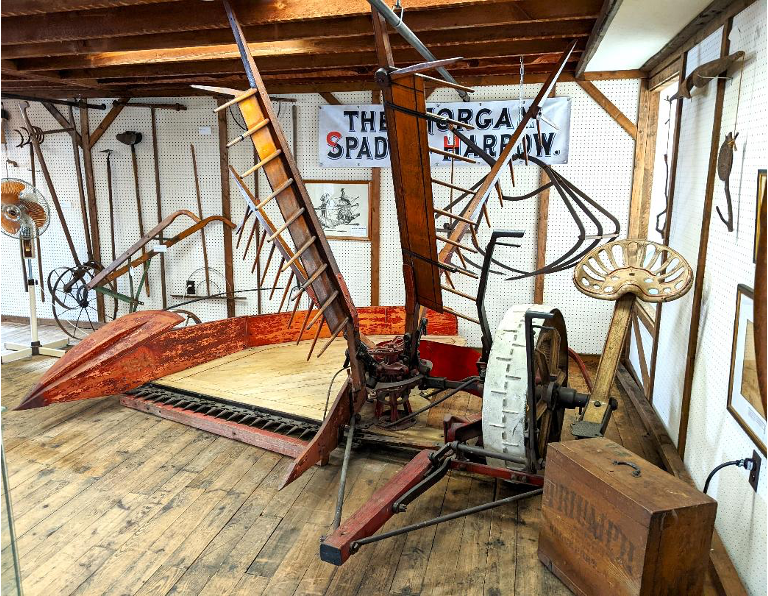This Reaper on display in the Emily Knapp Museum was stored in its original crating in the barn of Carl Burns of Hilton, NY. About 1955 when Sara Morgan Manning learned of its existence, she purchased the reaper and presented it to the Emily Knapp Museum of Local History.
The story of the Reaper began in 1834 when Cyrus Hall McCormick first patented the practical Grain Reaping Machine. During a chance encounter in Washington, DC with Congressman Elias Holmes of Brockport, Cyrus learned that Brockport’s Backus, Fitch, & Co. could build enough reaper machines for the 1845 harvest.
On July 17, 1844 McCormick demonstrated his machine on the Frederick Root farm in the Town of Sweden. When he returned to Brockport on August 6, 1845 to check on the manufacturer’s progress, he learned that nothing had yet been done.
McCormick then contacted William Seymour of the Globe Iron Works Manufacturing Company. He ordered 100 Grain Reaping Machines from Seymour, Chappell & Co. to be ready by the 1846 western trade and Backus, Fitch & Co. agreed to produce machines for local demand.
Seymour’s company built the 100 machines and promptly sold them. Backus, Fitch & Co. produced 30, which were defective. William Seymour and D. S. Morgan became partners in the Seymour & Morgan Company and manufactured harvesters for McCormick until 1848 when they separated from McCormick.
Although there is no indication that William Seymour studied engineering, he was a self-trained engineer and soon invented the quadrant platform and Aaron Palmer of Brockport designed the self-raking mechanism. Seymour & Morgan produced the newly designed reaper called the New Yorker, which contained a stand for the raker, a seat for the driver, and a scalloped, serrated, sectional sickle bar.
In 1851, the Seymour & Morgan Company manufactured and sold 500 harvesters and for many years thereafter, their company ruled the industry. Any company using their designs paid a royalty fee. They exported reapers to Europe, had a factory in Europe, and branch offices in Chicago.
Our displayed reaper is the Triumph #3, circa 1880. In 1872 Seymour retired from the business but continued as head of his foundry business until his retirement in 1878. As new innovations and more advanced equipment entered the marketplace, the use of reapers such as ours diminished. When Morgan’s company began to lose money, he sold his Spring Street factory to the Wheel Works Company.
McCormick sued Seymour & Morgan for patent infringements. The lawsuit continued for many years, but Seymour and Morgan eventually won the lawsuit. During a brief period, Abraham Lincoln was one of McCormick’s lawyers.
Photographs by Chris Martin


